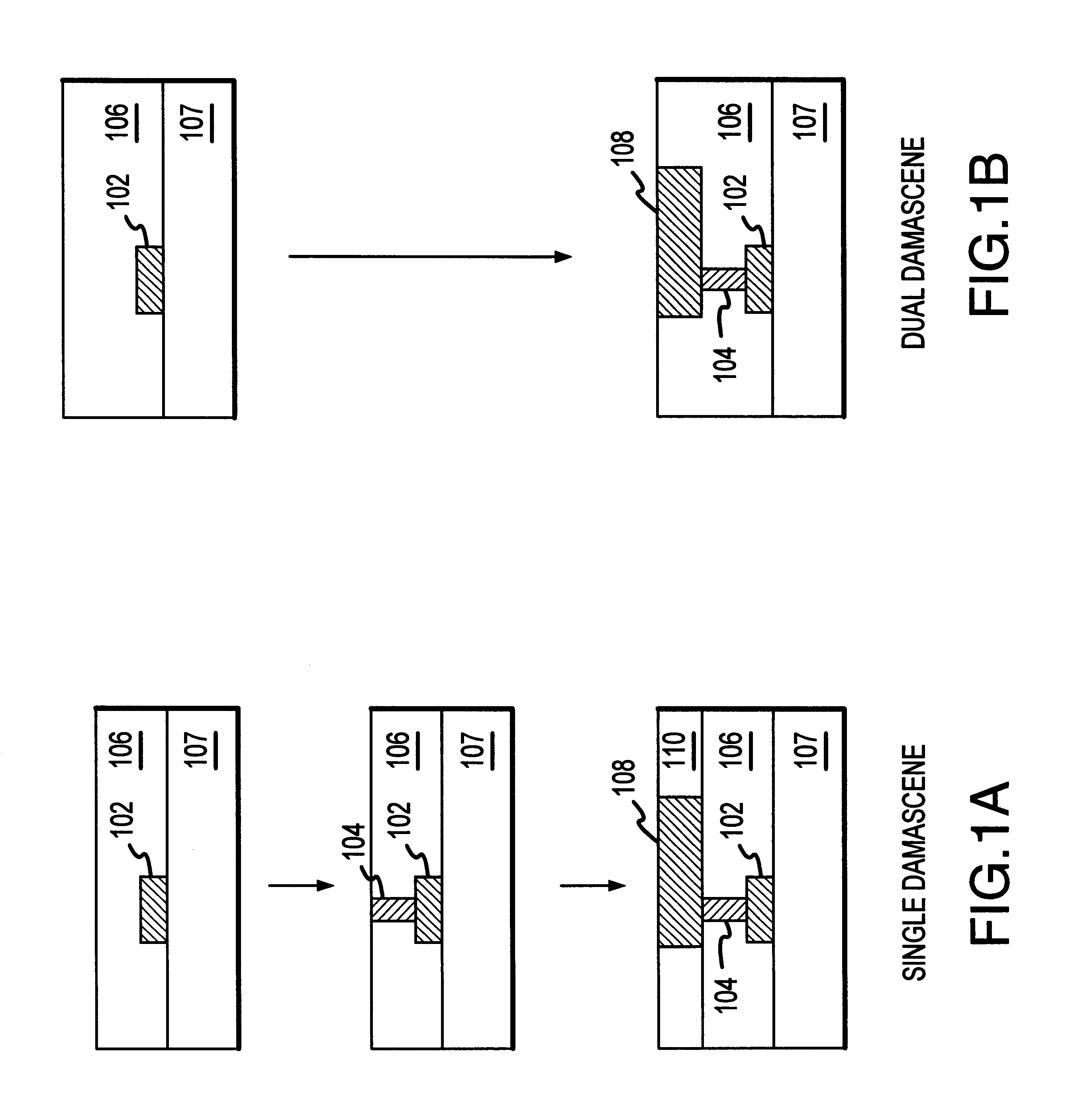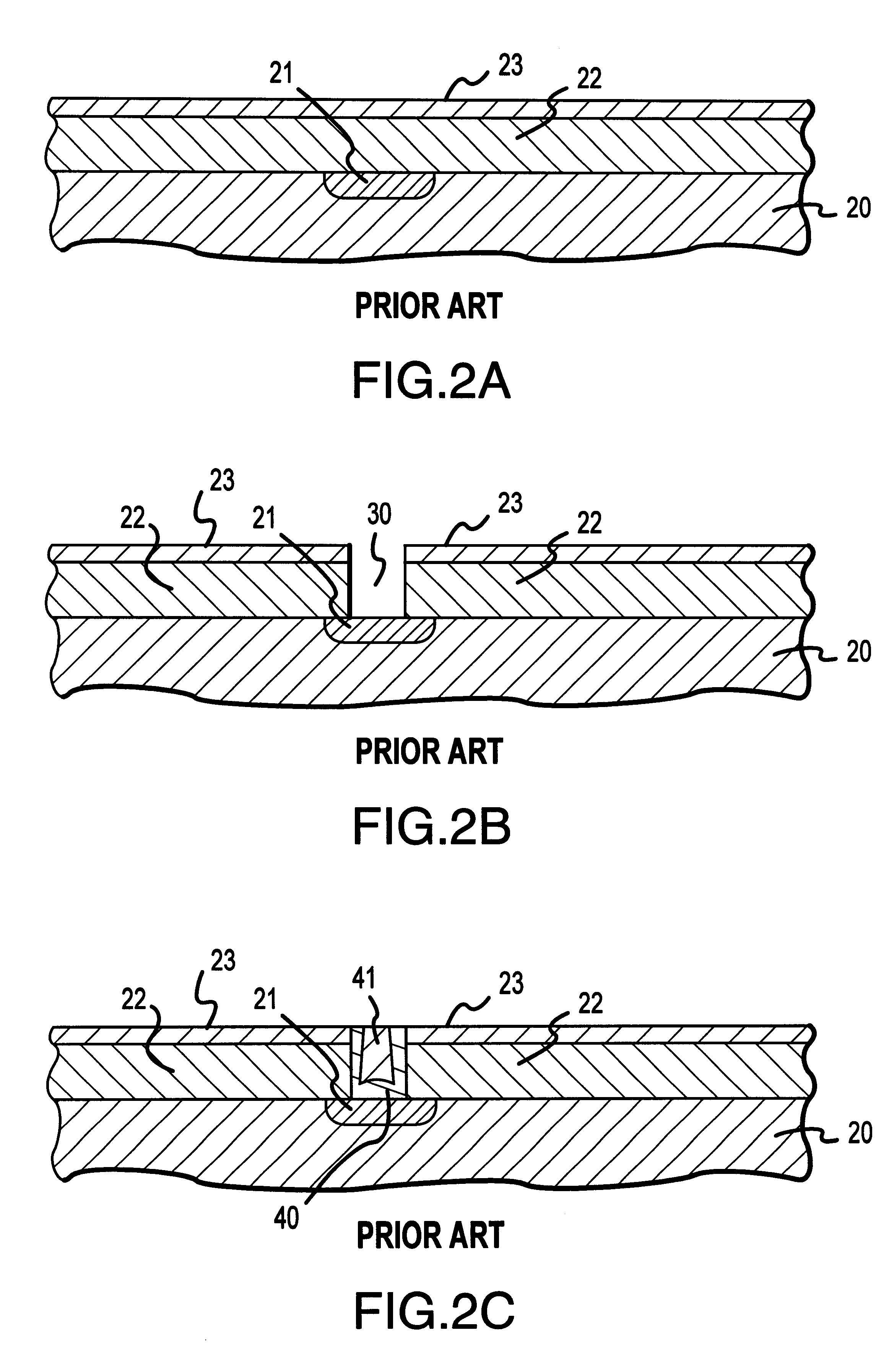IC interconnect structures and methods for making same
a technology of interconnecting structures and interconnecting elements, which is applied in the direction of semiconductor devices, electrical equipment, semiconductor/solid-state device details, etc., can solve the problems of poor metal step coverage along the edges of contact openings, ineffective metal deposition and photolithographic techniques, and difficult control of wet chemical etch processes typically used with metals
- Summary
- Abstract
- Description
- Claims
- Application Information
AI Technical Summary
Problems solved by technology
Method used
Image
Examples
Embodiment Construction
An interconnect fabrication process in accordance with various aspects of the present invention utilizes an etch stop layer deposited after CMP of the previously formed metal wiring or conductive plug layer, thereby eliminating the effect of erosion and allowing a thin etch-stop layer to be used. With momentary reference to FIG. 4I, a single-damascene process is employed wherein a contact plug 410 is formed within dielectric 402 above conductor 406, where conductor 406 may comprise any previous interconnect layer, diffusion, or the like. An etch stop layer 412 is used to form an interconnect wiring layer 420 within dielectric layer 414. In order to assure consistent thickness of interconnect layer 420, the materials used for etch stop layer 412 and dielectric layer 414 are chosen in conjunction with the particular etch process such that the etch rate of etch-stop layer 412 is substantially less than that of dielectric layer 414 during trench etch, and, likewise, is substantially gre...
PUM
| Property | Measurement | Unit |
|---|---|---|
| feature sizes | aaaaa | aaaaa |
| height | aaaaa | aaaaa |
| width | aaaaa | aaaaa |
Abstract
Description
Claims
Application Information
 Login to View More
Login to View More - R&D
- Intellectual Property
- Life Sciences
- Materials
- Tech Scout
- Unparalleled Data Quality
- Higher Quality Content
- 60% Fewer Hallucinations
Browse by: Latest US Patents, China's latest patents, Technical Efficacy Thesaurus, Application Domain, Technology Topic, Popular Technical Reports.
© 2025 PatSnap. All rights reserved.Legal|Privacy policy|Modern Slavery Act Transparency Statement|Sitemap|About US| Contact US: help@patsnap.com



